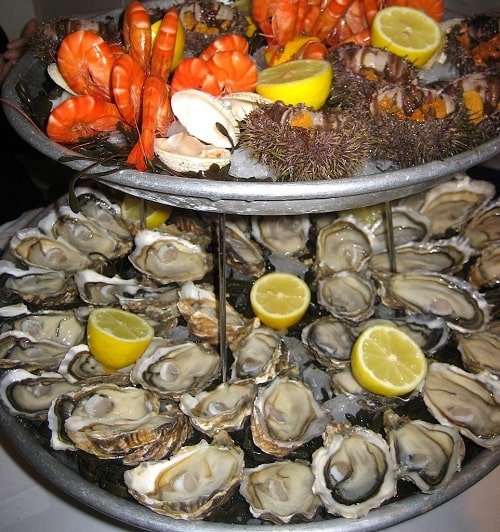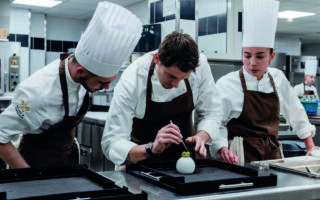
How to eat an oyster
Top tips from renowned author and ambassador of French living, Mireille Guiliano
Love ’em or hate ’em, in France, oysters are taken as seriously as the finest wines – and just as you would sample various different appellations if you had ambitions to become a wine connoisseur, to really get to know your oysters, you’re going to need to try a few from different parts of the coast. In fact, did you know, oysters raised as little as 100m away from each other can taste totally different?
But the question is, how do you taste them correctly? Should you slurp an oyster or should you chew it?
Mireille Guiliano, the internationally best-selling author of French Women Don’t Get Fat and former President and CEO of Clicquot, Inc. (LVMH), wrote an engaging exploration of the Parisian love affair with the world’s most sensuous shellfish called Meet Paris Oyster, A Love Affair with the Perfect Food. A contributor to our sister site, FrenchEntrée, she recommends slurping the oyster and its juices into your mouth (with a small oyster fork to help it on its way, if necessary), chewing it two or three times to release all the flavours before swallowing. Here’s what you need to look out for, according to Mireille…

USE YOUR EYES
Starting with the oyster already on its half shell, the look can tell you the size and type, but you will also note colour, from translucent to pearl-like to green around the gills to blue-green. You will also note if the oyster is plump and smooth or perhaps flat. All of these are okay. They are identifiers and differentiators and help you pick what you like.
USE YOUR NOSE
The aroma of an oyster is a treat. You are smelling the sea in its various flavours and intensities, depending on where the oyster comes from. The smell should be super fresh; its power can be mild to strong. When I am in Paris and I smell an oyster, I can be transported, Proust-like, to the seaside far away and back to a childhood or adult experience.
USE YOUR PALATE
Salinity is a telling characteristic of an oyster, and it appears on the nose and on the palate. It can be mild or strong and in some cases powerfully iodized. All salts do not taste the same. On the palate, some of the operative taste words are crisp, mild, briny, buttery, sweet, milky, nutty, earthy, grassy, fruity, citrusy, watermelony, melony, creamy, clammy, clean, and bright. But here words are insufficient to describe the myriad of subtle flavour overtones that come from each oyster’s habitat, its terroir, and there are so, so many. Also, note how the flavours change on the palate, perhaps from initial saltiness (but what kind of salty?) after the first bite to a sweetness (what kind of sweetness?) And, just as the second sip and impression of a wine is influenced by the first and can be different, the taste of a second oyster is subtly different from the first, and you can perhaps pick up new or differently modulated flavours. The texture is telling as well: soft, crunchy, chewy, bitable, smooth, watery, firm, hard, airy, or creamy. The finish or aftertaste brings a great deal of the satisfaction experienced from the taste of an oyster. And, again just like wine, the longer the finish, the better. The minerals and fats in the oyster reveal themselves in the finish, as do evolving and lasting flavours. The more complexity, as with wine, all the more telling and often more satisfying.
Share to: Facebook Twitter LinkedIn Email
More in Gastronomy, Guide, How to, Oysters, Seafood, Tips




REPLY
REPLY